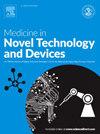扩散加权磁共振成像的高效量子力学模拟
Q3 Medicine
引用次数: 0
摘要
现代磁共振成像(MRI)实验需要同时进行自旋和空间动力学处理。本文旨在证明为扩散加权核磁共振成像实验模拟大型自旋系统的可能性。扩散核磁共振成像的数值模拟取决于布洛赫-托雷方程。后者描述了自旋系统在磁场和扩散过程影响下的行为。它们与磁共振成像(MRI)和核磁共振(NMR)研究尤为相关。这些方程处理的是与扩散和流动所代表的三维空间动力学相关的非耦合(-1/2)自旋。所提出的方法建议使用未打开的 Kronecker 乘积作为演化生成器,以尽量减少模拟时间和占用的计算机内存。为实现研究目标,利用了与四对耦合自旋系统相关的二维和三维扩散加权磁共振成像。在磁共振成像模拟中利用四对耦合自旋系统提高了自旋间相互作用建模的准确性和真实性,从而改进了组织特征描述和诊断能力。所获得的结果是以前的模拟软件包无法实现的。研究结果表明,Spinach 库可以模拟具有显著空间动态的复杂自旋系统。本文章由计算机程序翻译,如有差异,请以英文原文为准。
Efficient quantum of mechanical simulation of diffusion-weighted MRI
Modern magnetic resonance imaging (MRI) experiments require simultaneous spin and spatial dynamics treatment. This paper aims to demonstrate the possibility of simulating a large spin system for diffusion-weighted MRI experiments. The numerical simulation of diffusion MRI depends on Bloch-Torrey equations. The latter describe the behavior of spin systems under the influence of magnetic fields and diffusion processes. They are particularly relevant in magnetic resonance imaging (MRI) and nuclear magnetic resonance (NMR) studies. The equations deal with uncoupled (−1/2) spins associated with three-dimensional spatial dynamics represented by diffusion and flow. The proposed method recommends using an unopened Kronecker product for evolution generators to minimize the simulation time and reduce the occupied computer memory. Two and three-dimensional diffusion-weighted magnetic resonance imaging associated with four pairs of coupled spin systems were utilized to achieve the study's goals. Utilizing four pairs of coupled spin systems in MRI simulation enhances accuracy and realism in modeling interactions between spins, leading to improved tissue characterization and diagnostic capabilities. The obtained results were impossible using previous simulation packages. The results of the study demonstrate that the Spinach library can simulate complex spin systems with significant spatial dynamics.
求助全文
通过发布文献求助,成功后即可免费获取论文全文。
去求助
来源期刊

Medicine in Novel Technology and Devices
Medicine-Medicine (miscellaneous)
CiteScore
3.00
自引率
0.00%
发文量
74
审稿时长
64 days
 求助内容:
求助内容: 应助结果提醒方式:
应助结果提醒方式:


